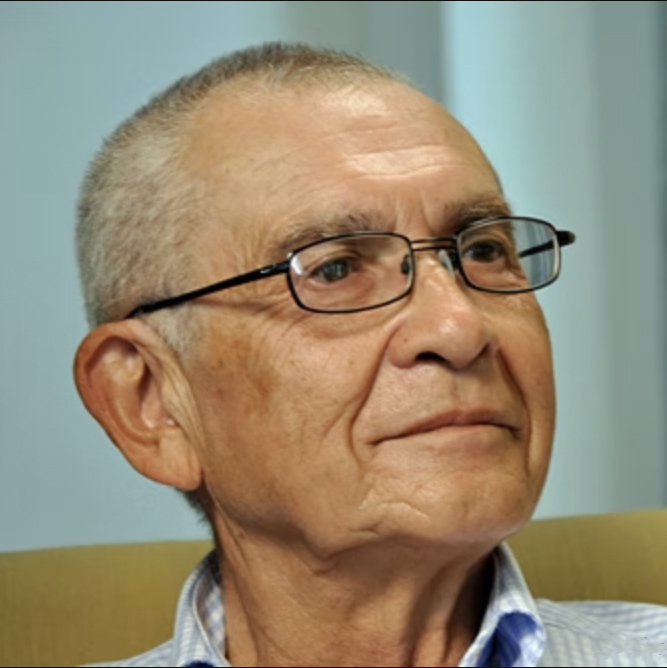 © Simons Foundation
© Simons Foundation
 © Simons Foundation
© Simons Foundation
Moving from Simferopol in Crimea to Moscow to study at Moscow State University in 1953, he went on to receive his doctorate in 1960 under Shafarevich. All of his early work was in arithmetic and number theory, with a strong influence of classical geometry. In 1958, as an undergraduate, he introduced into arithmetic an analogue of the ordinary differential equations for elliptic integrals in complex analysis. When Grothendieck generalized this construction to several variables in 1966, he named it the Gauss-Manin connection. It must have been a source of amusement to Manin and his friends to see his name prefixed in this way by Gauss's name. At the time, he had recently been appointed to the Chair of Algebra at Moscow State University, and soon after, he received the Lenin Prize.
He used his early ideas to prove the Mordell conjecture for function fields, which states that, over a field of finite characteristic, a one-parameter family of algebraic curves of genus >1 has just a finite number of rational sections.
He took Grothendieck's speculative ideas on motives on the cohomology groups of algebraic varieties and produced a version of the theory that is simple enough to explain to a first year graduate student. His ideas led to an active current field of research, lying at the foundations of Kontsevich's theory of motivic integration. They also motivated, in part, Voevodsky's work on the homotopy theory of motives, which remains an active area of research in this department.
In 1978, Manin and his then PhD student Drinfeld, now a distinguished professor at the University of Chicago, found an explicit parametrization of the instanton solutions of the Yang-Mills equation for the group SU(2) in four-dimensional space. This equation arose in the description of the strong and weak nuclear forces (what is now known as the Standard Model), describing a class of classical solutions around which the quantum theory is to be understood by perturbative methods. The same results were obtained at the same time in Oxford by Atiyah and his then PhD student Hitchin: the four authors published their results together in an article in Physics Letters A. This work lies at the foundation of one of the most important developments in pure mathematics of the last decades: the work of Donaldson and Witten on topological field theories. It is also the first place that quiver varieties, central to much of modern representation theory, occur.
With time, Manin's interests branched out in many directions: mathematical physics, quantum computing, linguistics, logic. One of the attractions of Northwestern University for him was the nascent work on quantum computers being carried out by colleagues in electrical engineering and physics. He continued to be interested in mathematical physics, writing the foundational paper of the modern theory of Gromov-Witten invariants with Kontsevich.
By one count, he wrote more than 20 expository volumes. Few people can have read all of them, but they are marked by a rigor and transparency coming from a restless urge to put down on paper an account that will anchor future research. His graduate textbook on logic belongs on the bookshelf of every person with an interest in the philosophy of mathematics, and his monograph on classical integrable systems remains the key reference for its lucid exposition of the formal variational calculus. There is a variant of the Yang-Mills equation, called super-Yang-Mills, which incorporates equal numbers of bosons (such as the photon and gluon) and fermions (the particles from which matter is built, such as electrons and neutrinos). Manin wrote a textbook on this subject, which also remains one of the best places to learn about the underlying geometry of the subject, called supergeometry.
The inaugural Nemmers Prize in Mathematics was awarded to him by Northwestern University in 1994. It was in the course of his frequent visits to Northwestern in the years that followed that the idea of appointing him to a Trustee Chair took form.